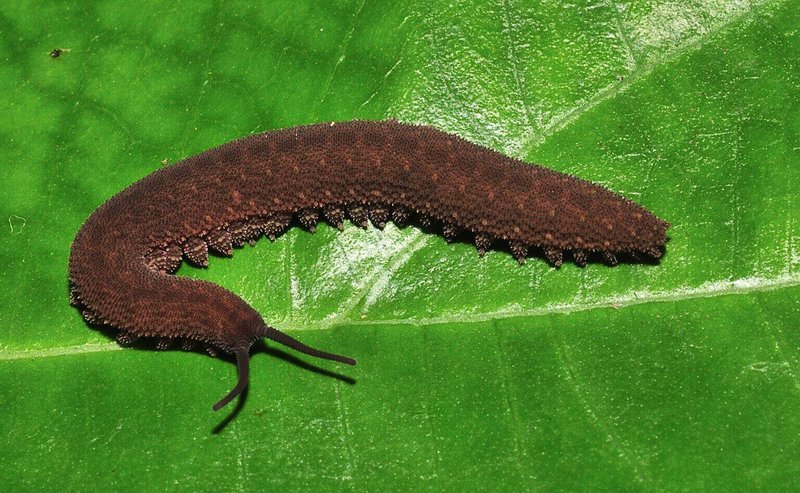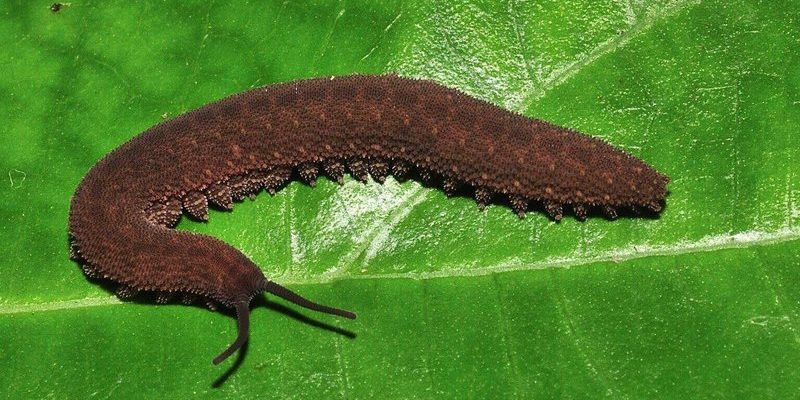
You might be wondering why we’d study something so peculiar. Well, the velvet worm’s hunting tactics, particularly its ability to capture prey with sticky slime, offer insights into survival techniques that date back to the time of the dinosaurs. By examining these wormy wonders, scientists can piece together what life might have looked like for ancient predators and their prey. So, let’s dive deeper into the world of velvet worms and uncover their role in studying ancient predation strategies.
What Are Velvet Worms?
Velvet worms, or *Onychophora*, are a unique group of invertebrates found predominantly in moist, tropical environments. They have soft, flexible bodies covered in tiny, tiny hair-like structures. If you’ve ever seen one, you might compare their appearance to that of a caterpillar. But they’re not insects; rather, they are more closely related to arthropods—think spiders and crabs.
These creatures can grow to about 15 centimeters long, and their bodies are segmented, giving them a somewhat alien but adorable look. What’s really interesting about velvet worms is their *hunting mechanism*. Instead of chasing down their prey, they rely on a surprising tactic: slime! When they spot their dinner, they shoot a sticky, adhesive slime from glands in their mouths that ensnares the unsuspecting creature. This unique method has researchers scratching their heads, looking at how this could reflect ancient predation strategies.
The Evolutionary Journey of Velvet Worms
Velvet worms are often described as living fossils, which means they’ve retained many characteristics resembling their ancestors from hundreds of millions of years ago. They branched off from other animal lineages during the Cambrian period, which is about 500 million years ago! Imagine that! While many species have come and gone, these little guys have adapted and survived through the ages.
Their ancient lineage allows scientists to study how these creatures have evolved in terms of predation. For instance, comparing modern velvet worms with fossilized remains helps researchers understand how their hunting strategies have changed—or stayed the same—over the eons. It’s like observing a longtime family business, where some practices endure while others evolve based on market demands.
What’s remarkable is that velvet worms survived mass extinction events, often thriving where many other species did not. This resilience might shed light on how early predators adapted their hunting tactics in response to environmental changes.
Understanding Predation Strategies
Predation strategies describe how animals hunt and capture their prey. It’s a matter of survival, and different species have developed unique tricks to outsmart their food sources. The study of velvet worms gives us a glimpse into ancient predation techniques, especially because their slime-shooting method is relatively primitive compared to today’s fast-moving predators.
Research shows that these worms use their slime not only to capture prey but also to facilitate consumption. Once a victim is caught, they leverage their slime to immobilize it, allowing them to feast more efficiently. This hunting technique speaks volumes about how early predators might have managed their meals, particularly when you consider the lack of complex tools or strategies found in modern predators.
By studying velvet worms, scientists can theorize about what a predator-prey relationship looked like millions of years ago. Did predators rely on speed, or were they more like velvet worms, using sticky traps? Understanding these differences helps piece together the puzzle of life during ancient times.
Field Studies and Observations
Scientists often head into the wild to observe velvet worms in their natural habitats. These field studies are essential because they provide firsthand experience of how these creatures behave in real life. By watching them hunt in their native environments, researchers can document valuable data about predation methods.
Field observations have revealed that velvet worms demonstrate a range of hunting behaviors. For example, they typically remain hidden in leaf litter, waiting for unsuspecting insects to pass by. When the moment is right, they spring into action, shooting their sticky slime with remarkable precision. It’s like watching an archer hit a bullseye, showcasing both skill and technique.
Moreover, these observations allow scientists to compare the hunting efficiencies of velvet worms to other predators. As they collect data, they can analyze what works best in different environments, considering factors like prey availability and habitat conditions. Ultimately, this research highlights how velvet worms not only survive but thrive as predators.
The Importance of Velvet Worms in Ecosystem Dynamics
You might be questioning why studying velvet worms matters beyond their cute, squishy appearance. Well, these creatures play a critical role in their ecosystems. As predators, they help regulate insect populations. This can be particularly helpful in maintaining balance in the ecosystem, preventing any one species from overwhelming the area.
When velvet worms capture and consume their prey, they also contribute to nutrient cycling within the environment. Their feeding habits allow for the decomposition of organic materials, enriching the soil and benefiting plant life. It’s a small but significant contribution to the health of their habitats.
Understanding the dynamics of velvet worm behavior can also offer insights into climate change and environmental shifts. As habitats change, observing how these creatures adapt can provide clues about the broader impacts on ecosystems. It’s like a temperature gauge, indicating how well a system is functioning.
Challenges in Velvet Worm Research
Studying velvet worms comes with its share of challenges. For one, they prefer dark, damp environments, making them tricky to find and observe. Researchers often have to get down and dirty, crawling through leaf litter and exploring hidden corners of rainforests to locate these elusive creatures.
Additionally, their habitats face threats from habitat destruction and climate change. As researchers dive deeper into their ecology, there’s an urgency to document their behavior before these environments change irreversibly. Each discovery of velvet worms adds to our understanding of their role in ancient and modern ecosystems, but it requires a concerted effort to ensure they survive for future generations to study.
While these challenges are significant, they also highlight the importance of preserving natural habitats. Protecting velvet worms means protecting the entire ecosystem, ensuring that the history hidden within these creatures remains accessible to future generations of scientists and curious minds.
As we continue to peel back the layers of velvet worm biology and behavior, we uncover not only their survival strategies but also a deeper understanding of our planet’s history. The connection between velvet worms and ancient predation strategies is a fascinating journey into evolution, ecology, and the intricacies of life over millions of years.
By studying these peculiar creatures, researchers are not just learning about the past; they’re also shaping our understanding of present-day ecosystems and their fragility. The lessons learned from velvet worms can help inform conservation efforts and remind us of the fragile balance needed for all life to thrive.
In a world where ancient wisdom meets modern science, velvet worms stand as a testament to resilience, adaptability, and the endless possibilities of life. So, the next time you think of worms, remember that these little creatures carry stories as old as time—they’re an essential piece of the puzzle that helps us understand our planet’s colorful history.

